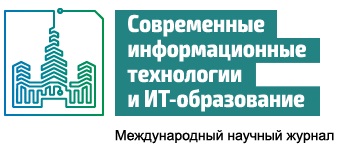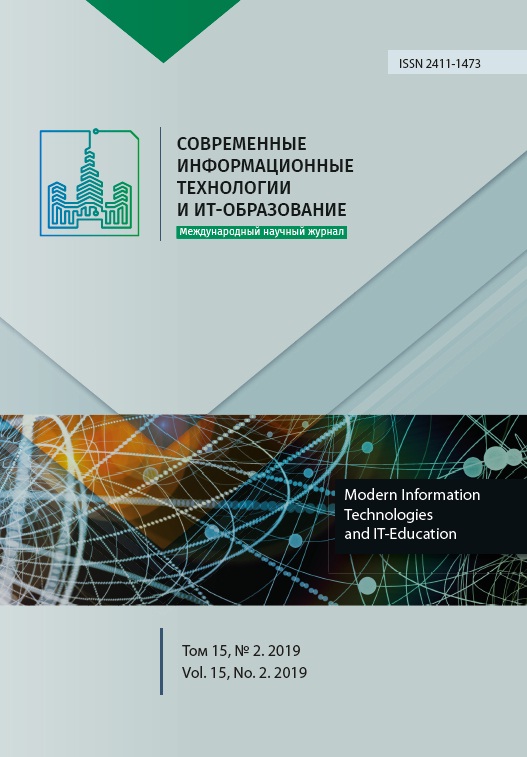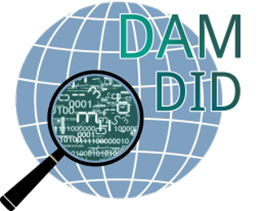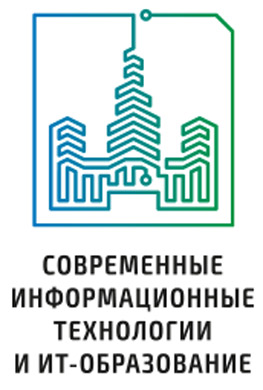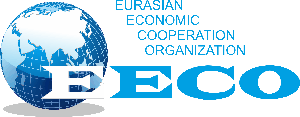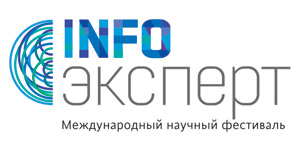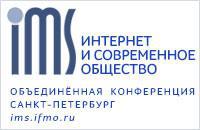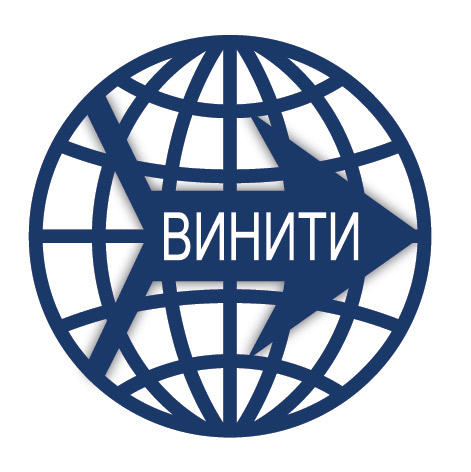Развитие медиакомпетентности будущих педагогов
роль и место интеллектуальных технологий
Аннотация
В статье представлен анализ практического опыта применения интеллектуальных технологий для развития медиакомпетентности студентов направления «Педагогическое образование». С целью решения поставленной задачи разработан сетевой образовательный модуль «Сетевые сервисы для создания мультимедийного контента». Центральным аспектом экспериментальной работы являлись возможности применения интеллектуальных технологий на разных этапах взаимодействия с медиаинформацией (перцептивном, продуктивном). Диагностика развития медиакомптентности проводилась на основании выделенной авторами структуры, включающей набор показателей сформированности медиакомпетентности личности: мотивационный, контактный, информационный, перцептивный, интерпретационный (оценочный), практико-операционный (деятельностный), креативный. Анализ результатов показал, что наибольший рост характерен для информационно-деятельностного показателя: в процессе работы с материалами модуля студенты изучают теоретические и практические аспекты применения возможностей медиа информации для разработки мультимедийных образовательных ресурсов, знакомятся с инструментами создания и обработки информации разных типов, формируют заинтересованность и стремление осваивать новые технологии, в частности, интеллектуальные, которые позиционируются как сквозные технологии цифровой экономики. Значителен рост контактного показателя, связанного с формированием целенаправленного продуктивного взаимодействия с медиаресурсами открытой информационной среды. Сложными для развития и оценивания являются перцептивный, интерпретационный и креативный показатели. Была отмечена взаимосвязь между перцептивным и интерпретационным показателями, формируемая в процессе взаимного анализа и оценивания медиаресурсов. В процессе развития медиакомпетентности будущие педагоги приобретают важные умения для профессионалов будущего: новая медиаграмотность, виртуальное сотрудничество, трансдисциплинарность, проектировочное мышление.
Литература
[2] Yáñez C., Okada A., Palau R. New learning scenarios for the 21st century related to Education, Culture and Technology. RUSC. Universities and Knowledge Society Journal. 2015; 12(2):87-102. (In Eng.) DOI: 10.7238/rusc.v12i2.2454
[3] Tejedor G., Segalàs J., Rosas-Casals M. Transdisciplinarity in higher education for sustainability: How discourses are approached in engineering education. Journal of Cleaner Production. 2018; 175:29-37. (In Eng.) DOI: 10.1016/j.jclepro.2017.11.085
[4] Lane M., Moore A., Hooper L., Menzies V., Cooper B., Shaw N., Rueckert C. Dimensions of student success: a framework for defining and evaluating support for learning in higher education. Higher Education Research and Development. 2019; 38(5):954-968. (In Eng.) DOI: 10.1080/07294360.2019.1615418
[5] Noskova T., Pavlova T., Iakovleva O. Web.3 Technologies and Transformation of Pedagogical Activities. In: Issa T., Isaías P. (Eds). Artificial Intelligence Technologies and the Evolution of Web 3.0. IGI Global, 2015, pp. 16-36. (In Eng.) DOI: 10.4018/978-1-4666-8147-7
[6] Melnikova N., Vagarina N. The adaptation of foreign experience of semantic web technologies in education. Tekhnicheskiye nauki - ot teorii k praktike = Technical sciences - from theory to practice. 2013; 24:21-27. Available at: https://elibrary.ru/item.asp?id=20151134& (accessed 22.05.2019). (In Russ., abstract in Eng.)
[7] Shikhnabieava T. Sh. Some directions of educational information systems intellectualization. Science of Person: Humanitarian Researches. 2018; 3(33):98-104. Available at: https://elibrary.ru/item.asp?id=35739966 (accessed 22.05.2019). (In Russ., abstract in Eng.)
[8] Kapusta J., Munk M., Svec P. Selection of Suitable PageRank Calculation for Analysis of Differences Between Expected and Observed Probability of Accesses to Web Pages. In: Kaenampornpan M., Malaka R., Nguyen D., Schwind N. (Eds). Multi-disciplinary Trends in Artificial Intelligence. MIWAI 2018. Lecture Notes in Computer Science. Springer, Cham. 2018; 11248:139-150. (In Eng.) DOI: 10.1007/978-3-030-03014-8_12
[9] Drlik M., Svec P., Skalka J. Comparison of approaches to the data analysis in the virtual learning environments. In: Turčáni M., Drlík M., Kapusta J., Švec P. (Eds). DIVAI 2014 – Distance Learning in Applied Informatics. Conference Proceedings. Constantine the Philosopher University in Nitra, Faculty of Natural Sciences, Department of Informatics, Nitra, 2014, pp. 561-572. (In Eng.)
[10] Dorofeeva A.A., Nyurenberger L.B. Trends in digitalization of education and training for industry 4.0 in the Russian federation. IOP Conference Series: Materials Science and Engineering. Cybernetics, Economics and Organization of Mechanical Engineering Production. 2019; 537(4):042070. (In Eng.) DOI:10.1088/1757-899X/537/4/042070.
[11] Urintsov A.I., Staroverova O.V., Sviridova E.S., Epifanov G.M. State policy of the Russian federation aimed at the development of education in the digital economy. Sovremennye informacionnye tehnologii i IT-obrazovanie = Modern Information Technologies and IT-Education. 2018; 14 (4):842-850. (In Russ., abstract in Eng.) DOI: 10.25559/SITITO.14.201804.842-850
[12] Pérez-Peñalver M. J., Aznar-Mas L. E., Montero-Fleta B. Identification and classification of behavioural indicators to assess innovation competence. Journal of Industrial Engineering and Management. 2018; 11(1):87-115. (In Eng.) DOI: 10.3926/jiem.2552
[13] Popkova E., Vovchenko N., Yepifanova T. Advance tools and performance criteria of modern media education. Media Education. 2017; 1:26-31. Available at: https://elibrary.ru/item.asp?id=28394525 (accessed 22.05.2019). (In Russ., abstract in Eng.)
[14] Hromic H., Hayes C. Characterising and Evaluating Online Communities from Live Microblogging User Interactions. 2018 IEEE/ACM International Conference on Advances in Social Networks Analysis and Mining (ASONAM). Barcelona, 2018, pp. 21-24. (In Eng.) DOI: 10.1109/ASONAM.2018.8508392
[15] Simonova I.V., Ustyugova T.A. A method for the development students’ media compatibility in the electronic educational environment. Science prospects. 2017; 12(99):94-99. Available at: https://elibrary.ru/item.asp?id=32688224 (accessed 22.05.2019). (In Russ., abstract in Eng.)
[16] Tarkhov S. Media competence and e-learning: problems, challenges, solutions. Media Education. 2016; 4:66-79. Available at: https://elibrary.ru/item.asp?id=26526473 (accessed 22.05.2019). (In Russ., abstract in Eng.)
[17] Manyaykina N.V., Nadtocheva E.S. Digital storytelling as a toll to develop media competence of future English teachers. Pedagogical Education in Russia. 2017; 10:81-87. Available at: https://elibrary.ru/item.asp?id=30519662 (accessed 22.05.2019). (In Russ., abstract in Eng.)
[18] Fedorov A.V. Personality media competence: from terminology to indicators. Innovations in Education. 2007; 10:75-108. Available at: https://elibrary.ru/item.asp?id=9589372 (accessed 22.05.2019). (In Russ., abstract in Eng.)
[19] Kubey R. Media Education: Portraits of an Evolving Field. Kubey R. (Ed.) Media Literacy in the Information Age. New Brunswick & London: Transaction Publishers, 1997. (In Eng.)
[20] Tyunnikov Y., Kazakov I., Maznichenko M., Mamadaliev А. The media competence of the teacher: an innovative approach to the self-projection. Media Education. 2016; 4:29-46. Available at: https://elibrary.ru/item.asp?id=26526471 (accessed 22.05.2019). (In Russ., abstract in Eng.)
[21] Tunnikov Y., Afanasyeva T. Kazakov I. Continuous formation of media competence of teachers in constant changes in information and educational environment. Media Education. 2017; 1:58-79. Available at: https://elibrary.ru/query_results.asp (accessed 22.05.2019). (In Russ., abstract in Eng.)
[22] Grigoryeva I.V. From media educational space of university to media competence of future teacher. Vestnik Irkutskogo gosudarstvennogo tehnicheskogo universiteta = Proceedings of Irkutsk State Technical University. 2012; 5(64):280-287. Available at: https://elibrary.ru/item.asp?id=17749607 (accessed 22.05.2019). (In Russ., abstract in Eng.)
[23] Grigoryeva I.V. Alternative view on nature and content of “future teacher’s media competence” concept in FSES-3. Magister Dixit. 2012; 3:147-160. Available at: https://elibrary.ru/item.asp?id=17975708 (accessed 22.05.2019). (In Russ., abstract in Eng.)
[24] Tumaleva E.A., Vinokurova O.L., Senkova L.P. Network educational modules. New educational strategies in the modern information space: Collection of scientific articles. SPb Publishing house "Lema", 2014, pp. 52-59. Available at: https://elibrary.ru/item.asp?id=21353197 (accessed 22.05.2019). (In Russ.)
[25] Hussain A., Mkpojiogu E.O.C., Almazini H., Almazini H. Assessing the usability of Shazam mobile app. AIP Conference Proceedings. 2017; 1891:020057. (In Eng.) DOI: 10.1063/1.5005390
[26] Hussain A., Gul S., Shah T.A., Shueb S. Retrieval effectiveness of image search engines. Electronic Library. 2019; 37(1):173-184. (In Eng.) DOI: 10.1108/EL-07-2018-0142

Это произведение доступно по лицензии Creative Commons «Attribution» («Атрибуция») 4.0 Всемирная.
Редакционная политика журнала основывается на традиционных этических принципах российской научной периодики и строится с учетом этических норм работы редакторов и издателей, закрепленных в Кодексе поведения и руководящих принципах наилучшей практики для редактора журнала (Code of Conduct and Best Practice Guidelines for Journal Editors) и Кодексе поведения для издателя журнала (Code of Conduct for Journal Publishers), разработанных Комитетом по публикационной этике - Committee on Publication Ethics (COPE). В процессе издательской деятельности редколлегия журнала руководствуется международными правилами охраны авторского права, нормами действующего законодательства РФ, международными издательскими стандартами и обязательной ссылке на первоисточник.
Журнал позволяет авторам сохранять авторское право без ограничений. Журнал позволяет авторам сохранить права на публикацию без ограничений.
Издательская политика в области авторского права и архивирования определяются «зеленым цветом» в базе данных SHERPA/RoMEO.
Все статьи распространяются на условиях лицензии Creative Commons «Attribution» («Атрибуция») 4.0 Всемирная, которая позволяет другим использовать, распространять, дополнять эту работу с обязательной ссылкой на оригинальную работу и публикацию в этом журналe.
